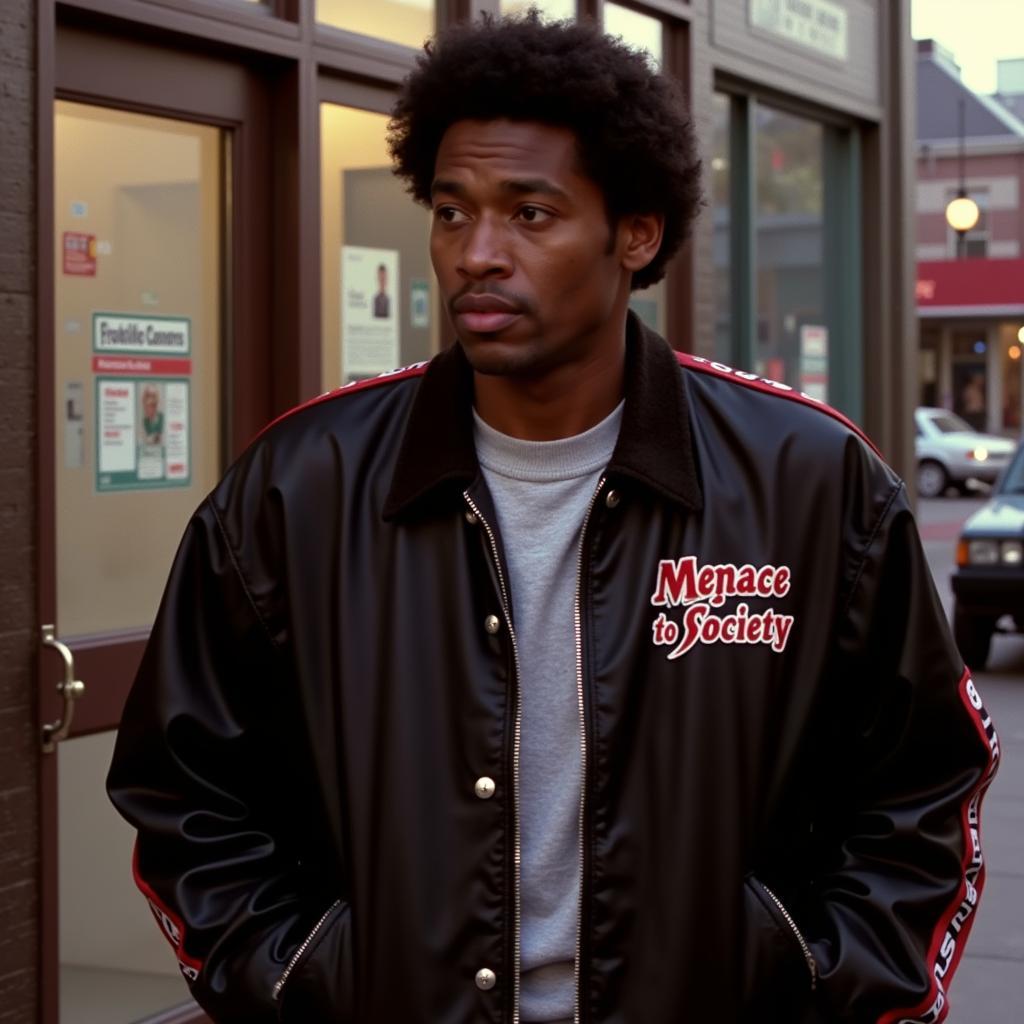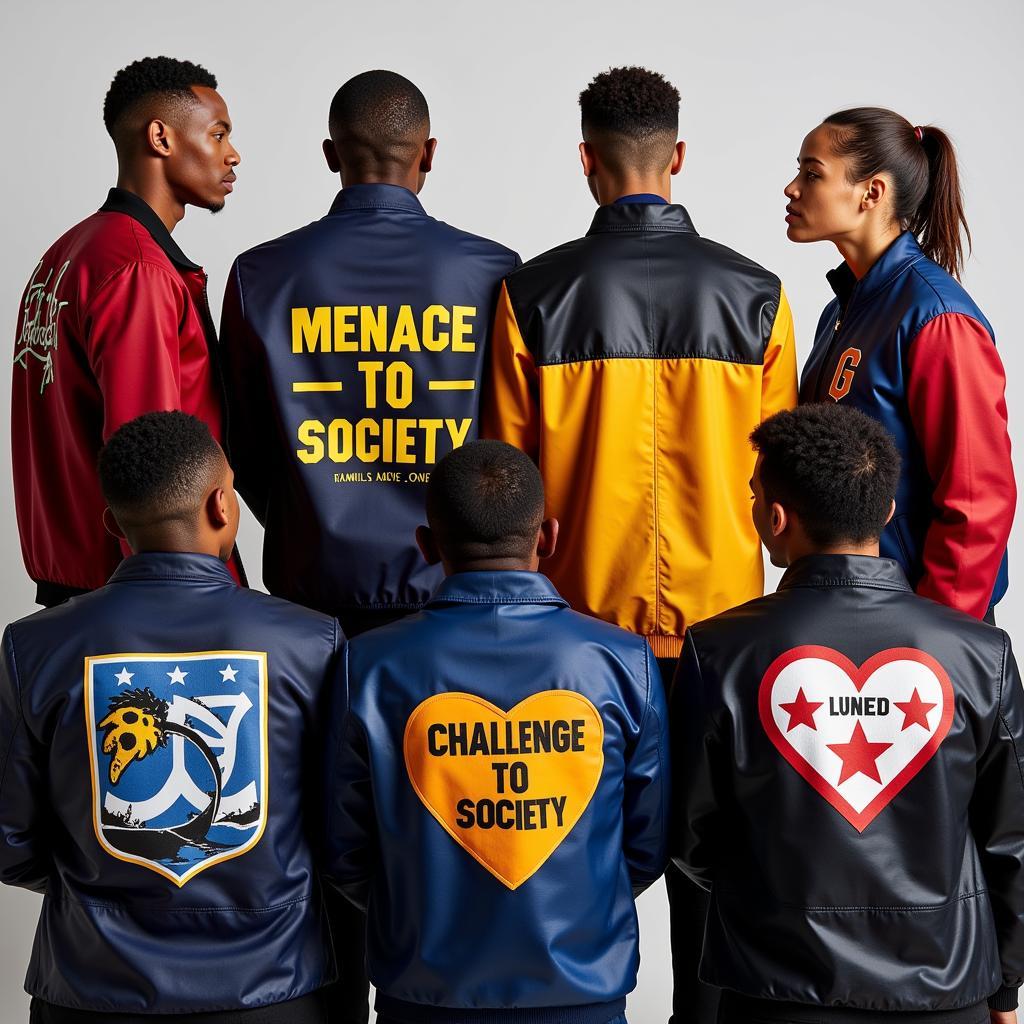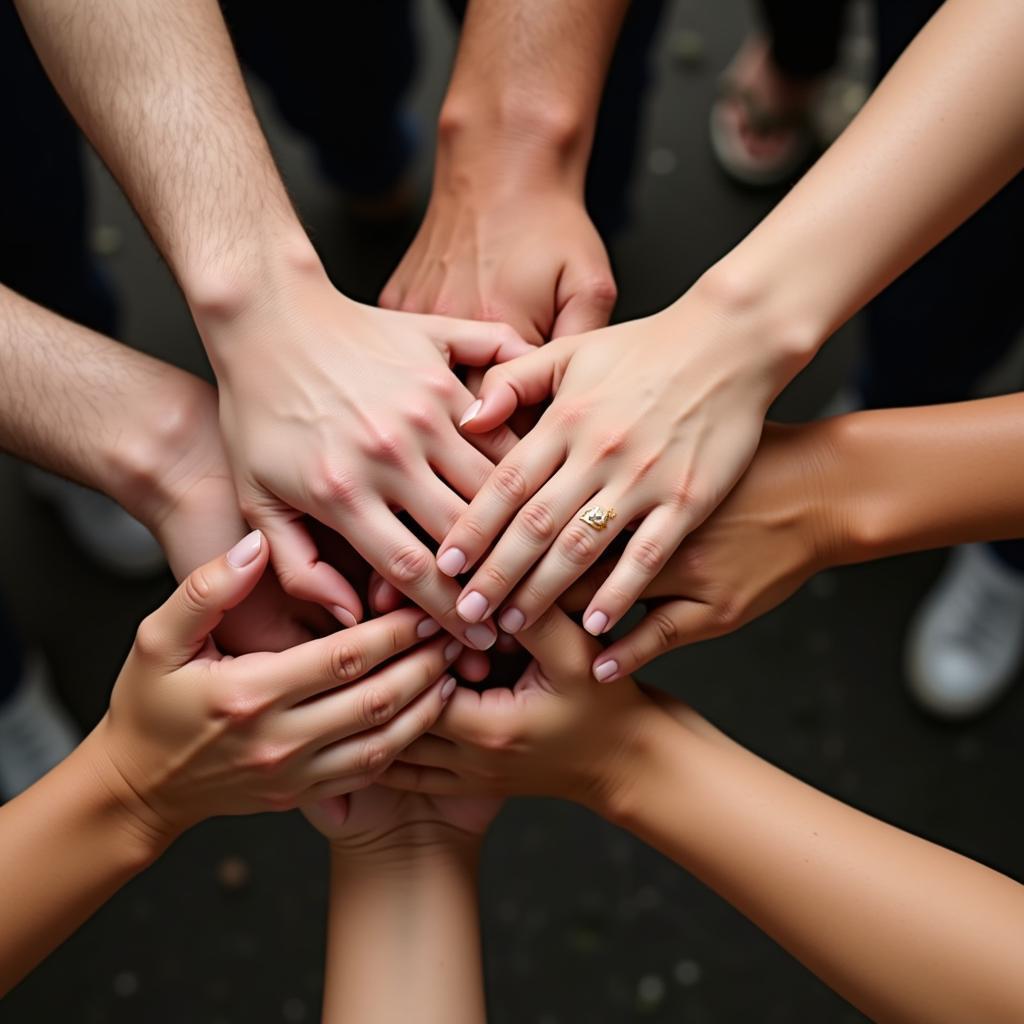The “menace to society” jacket, instantly recognizable by its bold lettering, often evokes strong reactions. While its origins are rooted in pop culture, the phrase and its visual representation have transcended the screen, becoming intertwined with societal perceptions of rebellion, nonconformity, and, unfortunately, fear. But can a piece of clothing truly be a “menace to society”? At the Society For Peace, we believe in looking beyond surface appearances and engaging in thoughtful dialogue to bridge divides. Let’s unravel the layers of meaning associated with this iconic garment.
From Silver Screen to Streets: Tracing the Roots of an Icon
 Menace II Society film still featuring the iconic jacket
Menace II Society film still featuring the iconic jacket
The “menace to society” jacket found its genesis in the 1993 film “Menace II Society,” a powerful portrayal of inner-city life, systemic inequality, and the cyclical nature of violence. Worn by the film’s protagonist, Caine, the jacket was never intended as a literal threat. Instead, it served as a visual metaphor for the societal forces that marginalized and ostracized him, ultimately pushing him towards a path of self-destruction. The jacket became a symbol of defiance against a system perceived as unjust, a desperate cry for recognition, and a tragic embodiment of unfulfilled potential.
Deconstructing the Message: Beyond the Words
The phrase “menace to society” itself carries a heavy weight. It implies inherent danger, a threat to established order, and a need for caution. This labeling can be particularly damaging when applied to individuals or groups based solely on appearances or pre-conceived notions. It reinforces stereotypes, perpetuates fear, and hinders our ability to see each other as individuals with complex stories and experiences.
 Diverse group of people wearing customized "menace to society" jackets
Diverse group of people wearing customized "menace to society" jackets
Reclaiming the Narrative: From Fear to Understanding
The power of symbols lies in their fluidity. While the “menace to society” jacket might initially evoke negative connotations, it’s essential to recognize its potential for positive transformation. By engaging in open conversations about its origins, its intended meaning, and the societal anxieties it reflects, we can begin to dismantle harmful stereotypes and foster understanding.
Can a Jacket Spark Dialogue?
Absolutely. The “menace to society” jacket can serve as a starting point for conversations about:
- Systemic Inequality: How do societal structures and prejudices contribute to the marginalization of certain groups?
- The Power of Representation: How do media and popular culture influence our perceptions of individuals and communities?
- Empathy and Understanding: How can we move beyond judging individuals based on appearances and challenge our own biases?
Moving Forward: Embracing Compassion and Connection
Instead of viewing the “menace to society” jacket solely through a lens of fear or judgment, let’s use it as an opportunity to spark dialogue, challenge assumptions, and build bridges of understanding. By embracing compassion and fostering meaningful connections, we can create a world where clothing, regardless of its message, is never a barrier to peace.
 Diverse hands joined together in a symbol of unity and solidarity
Diverse hands joined together in a symbol of unity and solidarity
Frequently Asked Questions
Q: Is it appropriate to wear a “menace to society” jacket?
A: The decision to wear any clothing item is personal. However, it’s crucial to be mindful of the potential interpretations and impact your choices may have on others. Engaging in thoughtful reflection and considering the context is essential.
Q: How can I challenge stereotypes associated with certain clothing styles?
A: Openly challenging stereotypes, engaging in respectful conversations, and promoting understanding are crucial steps. Sharing your own experiences and perspectives can also help dismantle harmful assumptions.
Q: How can we create a more inclusive and understanding society?
A: Cultivating empathy, actively listening to diverse voices, and challenging our own biases are essential. By fostering genuine connections and celebrating our shared humanity, we can build a more just and compassionate world.